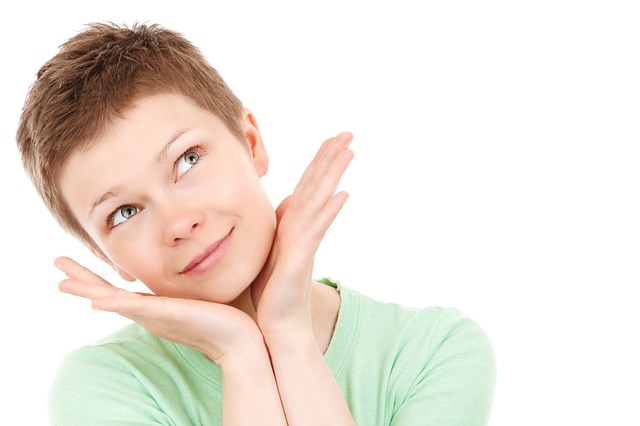
 Tired of dealing with sensitive skin issues like redness, dryness, allergic rashes and acne?
Tired of dealing with sensitive skin issues like redness, dryness, allergic rashes and acne?
The American Academy of Dermatology says that sensitive skin affects millions of people, causing uncomfortable and embarrassing issues that we all just wish would go away. A 2011 study found that out of 994 subjects questioned, nearly 45 percent declared having sensitive or very sensitive skin. Troublesome symptoms included dryness, combination skin, dermatological disorders, and higher skin reactivity to cosmetics and environmental factors.
I really feel for people with sensitive skin, as I’ve experienced it myself, especially when I was going through cancer treatments, but even now I have had to make significant changes in my lifestyle to maintain a clear complexion. My father, too, suffered sensitive skin during his cancer treatments, to the point of being painful as well as embarrassing.
These issues motivated me to create CV Skinlabs, my line of natural and organic skin care products that nourish and restore all kinds of sensitive skin. In addition to providing these products, I wanted to talk about ways you can manage sensitive skin issues to enjoy a more comfortable and healthy-looking complexion you’ll be proud of.
This week, we’ll start with redness-how it shows up, how you can prevent it, and how you can treat a flare-up. In the coming weeks we’ll go into some other sensitive skin issues like dryness and acne, so stay tuned!
How Redness Plagues Our Skin
Sometimes we may experience temporary redness caused by too much sun or a bit of flushing in an embarrassing moment. Those who see redness more often, however, may be suffering from rosacea, a common skin disease that affects about 13 million Americans.
Symptoms may include:
- General redness
- Swelling
- Bumps
- Pimples
- Visible blood vessels
- Inflammation
- Episodes of flushing and redness on the face and neck
- Skin thickening
To Prevent It
We don’t know yet for sure what causes rosacea, but it seems to run in families, and is usually more prevalent in people with fair skin. To reduce flare-ups, try the following tips:
- Avoid harsh and drying soaps-use moisturizing, nourishing cleansers that are fragrance-free
- Wash gently-avoid harsh scrubbing and sharp exfoliating agents
- Use sunscreen everyday-choose a safe, non-chemical option like zinc oxide. Meanwhile, avoid sun exposure as much as possible.
- Avoid dietary triggers like hot beverages, spicy foods, alcohol, and large, hot meals.
- Get enough omega-3 fatty acids in your diet-they naturally help reduce inflammation. Salmon, anchovies, walnuts, flaxseed, and mackerel are all good sources.
- Avoid rough treatments like microdermabrasion and acidic products like alpha-hydroxy acids as they can exacerbate inflammation and stinging.
You may also want to try products that include natural anti-inflammatories, as these can help calm skin and reduce redness:
- Calming Moisture for Face, Neck & Scalp: Instantly soothes and hydrates flushed skin, with oat extract to reduce redness and itch. Also includes naturally soothing aloe vera.
- Lotus Moon Balancing Skin Serum: Contains natural anti-inflammatories like rosehip fruit oil, olive seed oil, and calendula, as well as calming chamomile and avocado.
- Acure Organics Sensitive Facial Cleanser: Contains soothing argan oil, probiotics, and pumpkin seed oil, as well as omega fatty acids and acai berry to calm, soothe, and tame redness.
To Treat a Flare-Up
Once you get a flare up, resist the urge to be rough with your skin. Instead, continue with your gentle cleansing and moisturizing, and then look for treatment products that will help reduce your suffering.
- Rescue + Relief Spray: Contains chamomile and cucumber, which deliver calming, and skin-softening benefits. Also has water lily, which naturally removes heat, and valerian and comfrey, which both provide anti-inflammatory benefits. Use to remove heat and redness anytime, anywhere. For extra cooling action, store in the refrigerator.
- Juice Beauty Hydrating Mist: Rosehip, ylang ylang, resveratrol and organic juices tone, refresh, and hydrate to remove heat and calm skin.
- Lotus Moon Cherry Blossom Healing Soothe: If your skin is actually painful, you may want to try this product. It helps super dry, irritated skin to heal more quickly, with naturally soothing willowherb extract, shea butter, and centella asiatica extract.
You can also make your own masks to help bring your skin back to normal:
- Cucumber-oatmeal: Mix one cup of oatmeal with chopped cucumber in a blender. Add some yogurt for extra moisturizing. Apply on face and leave for 20 minutes, then rinse.
- Green tea: Brew some green tea, let it cool, and then soak a washcloth and apply to your face. Leave for 10-20 minutes. You don’t have to rinse it off unless you want to.
- Aloe vera: Get some aloe-as pure as possible-and apply to the red areas of your skin like a moisturizer.
- Mix your own: Use ingredients like lavender (eases inflammation), licorice root (potent anti-inflammatory with compounds that reduce redness), feverfew (helps reduce tiny red lines), chamomile, tea tree, yogurt, honey, and oatmeal.
Makeup Tips
- Use a yellow-based concealer to hide the redness.
- Try more natural and organic foundations and other makeup products to minimize irritation. Some good options include Vapour Organic Beauty, Jane Iredale, and Alima Pure.
Do you have good remedies for redness and rosacea? Please share your tips.

